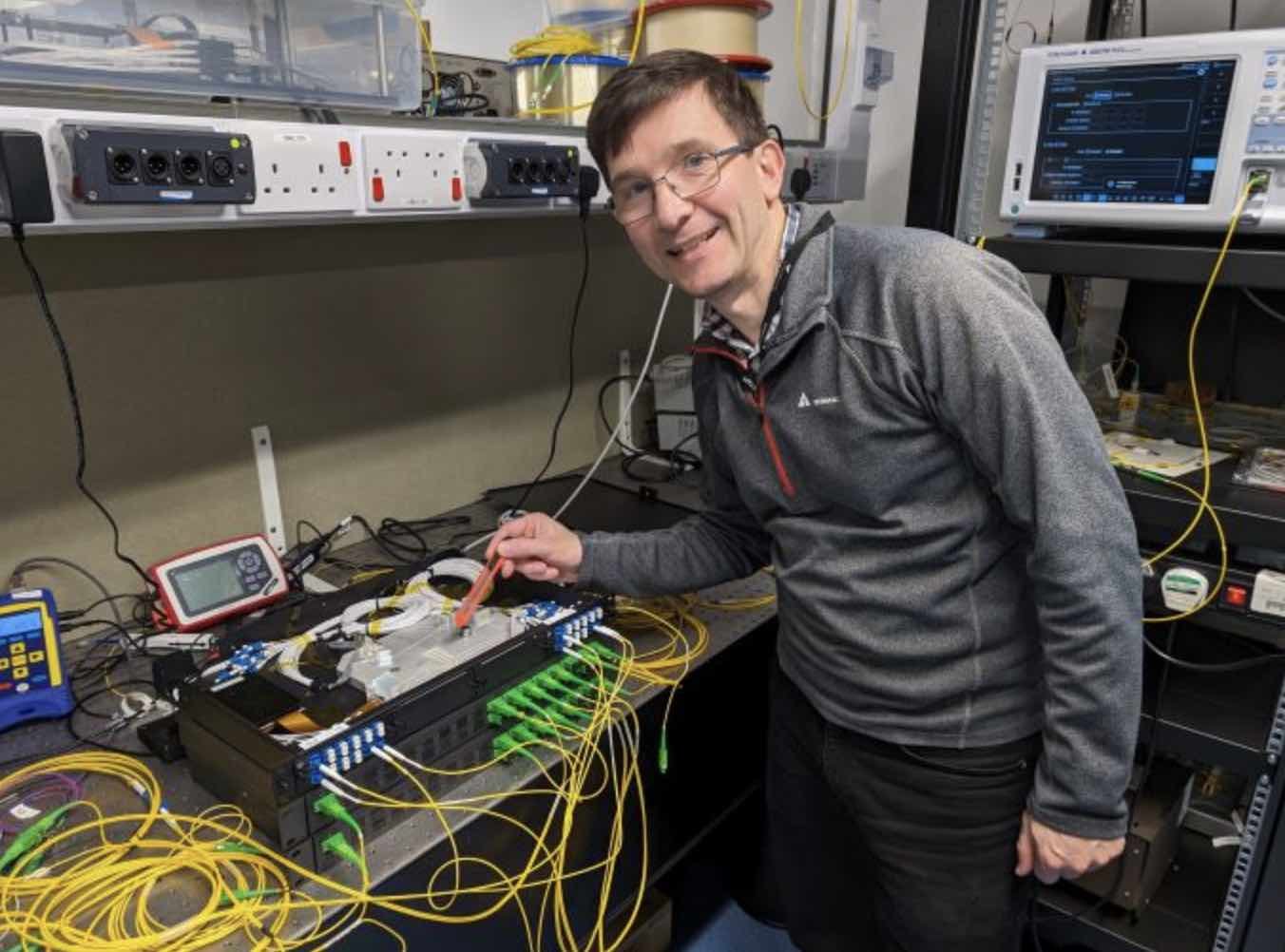The fastest data delivery rate ever achieved using specific wavelength bands in fiber optic technology has been reported by an international team of researchers, who say they sent information 4.5 million times faster than the average home broadband will allow.
According to researchers at Aston University in Birmingham, England, who participated in the experiment, a series of new technologies they developed allowed them to successfully transfer data at an astonishing rate of 301 terabits (301,000,000 megabits) per second.
Remarkably, the Aston team says the breakthrough that achieved these impressive data transfer rates used only standard optical fiber.
The team says their breakthrough paves the way toward greener solutions by allowing the transfer of larger amounts of information without the use of additional optical fiber.
A Breakthrough in Broadband
According to 2023 data, in the United States, the median download speed of fixed broadband clocked in at around 213.75 Mbps, making it the 6th fastest in the world. Mobile Broadband in the U.S. is, on average, close to 97.09 Mbps, the 15th fastest.
In the UK, a home broadband performance report published last September by the Office of Communications, or Offcom, said the average broadband speed is 69.4 Mbps.
“Our research shows that average download speeds for home broadband have continued to increase,” Offcom said in a report issued last year, adding that the current 69.4 Mbps figure represents “a 17% increase year-on-year, as people have upgraded to higher-bandwidth services, including full-fibre connections.”
Enter Dr Ian Phillips and Wladek Forysiak, a professor at Aston’s Institute of Photonic Technologies, both of whom participated in the team’s efforts to see whether the limits of data transmission using standard optical fiber were being vastly underutilized.


Collaborating with researchers at Nokia Bell Labs in the USA and Japan’s National Institute of Information and Communications Technology (NICT), the team found that opening additional wavelength bands that were previously unused in optical fiber systems has unleashed a tremendous untapped potential that could revolutionize fiber data transfer.
Using different wavelengths can be compared to various colors of light that are transmitted using optical fiber, where in the past only one or two colors were used as opposed to the entire color spectrum available.
With an ever-increasing demand for data, the new technology is expected to upend how optical fiber data transfer is used while reducing the need for installment of additional fiber by opening up the full potential of cables already in use.
Unleashing Fiberoptics’ Full Potential
The team’s breakthrough was made with the help of a series of new optical technologies that allowed them to better leverage the full capabilities of optical fiber.
Fiberoptics relies on transferring information through small flexible fibers of glass or other transparent solids that carry information using light. At the heart of the team’s breakthrough were devices called optical amplifiers, along with newly developed optical gain equalizers they used to access them and an optical processor used as a management device.


“Broadly speaking, data was sent via an optical fiber like a home or office internet connection,” said Phillips, who led the development of the new optical processor the team used.
Phillips says that compared to the commercially available C and L-bands, the team used two additional spectral bands, the E and S-bands, which had not previously been used for such purposes.
“Such bands traditionally haven’t been required because the C- and L-bands could deliver the required capacity to meet consumer needs,” Phillips said in a statement.
The E-band occupies the space immediately adjacent to the C-band in the electromagnetic spectrum. Although it has previously been largely ignored since C and L-bands alone have been capable of meeting consumer demand, and because emulation of E-band channels in a controlled manner was a technological limitation that researchers hadn’t yet overcome.
Tapping the E-Band, and Beyond
In recent years, researchers like Phillips have been focusing on ways optical amplifiers could be developed to allow operation in the E-band. This untapped region is close to three times as wide as the C-band.
“Before the development of our device, no one had been able to properly emulate the E-band channels in a controlled way,” Phillips said.
Professor Forysiak says that the achievement of a new device that allowed the team to emulate E-band channels greatly increased the transmission capacity of the network. This breakthrough, he says, could greatly improve users’ connections while also expanding accessibility without implementing additional optic fiber architecture.
“This groundbreaking accomplishment highlights the crucial role of advancing optical fiber technology in revolutionizing communication networks for faster and more reliable data transmission,” Forysiak said.
Beyond just the controlled emulation of the E-band, Forysiak says that utilizing additional bands like the L and S-bands will also help reduce the costs for users, in addition to providing an environmentally friendly solution that is still able to meet steadily growing broadband needs.
“It is also a ‘greener solution’ than deploying more, newer fibers and cables,” Forysiak said, “since it makes greater use of the existing deployed fiber network, increasing its capacity to carry data and prolonging its useful life & commercial value.”
Phillips, Forysiak, and their collaborators’ results were detailed in a paper presented at the European Conference on Optical Communication (ECOC) held in Glasgow last October.
The team’s paper was published in March by the Institute of Engineering and Technology.
Micah Hanks is the Editor-in-Chief and Co-Founder of The Debrief. He can be reached by email at micah@thedebrief.org. Follow his work at micahhanks.com and on X: @MicahHanks.

